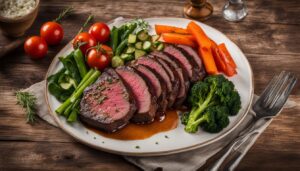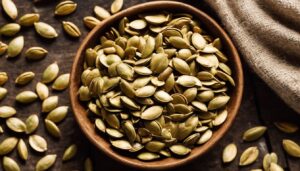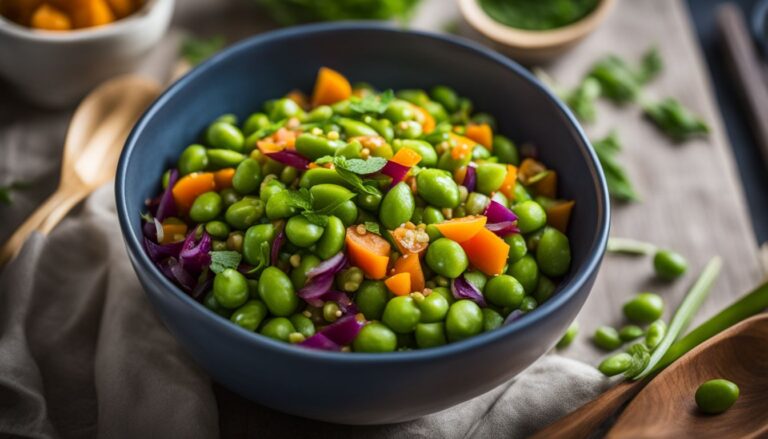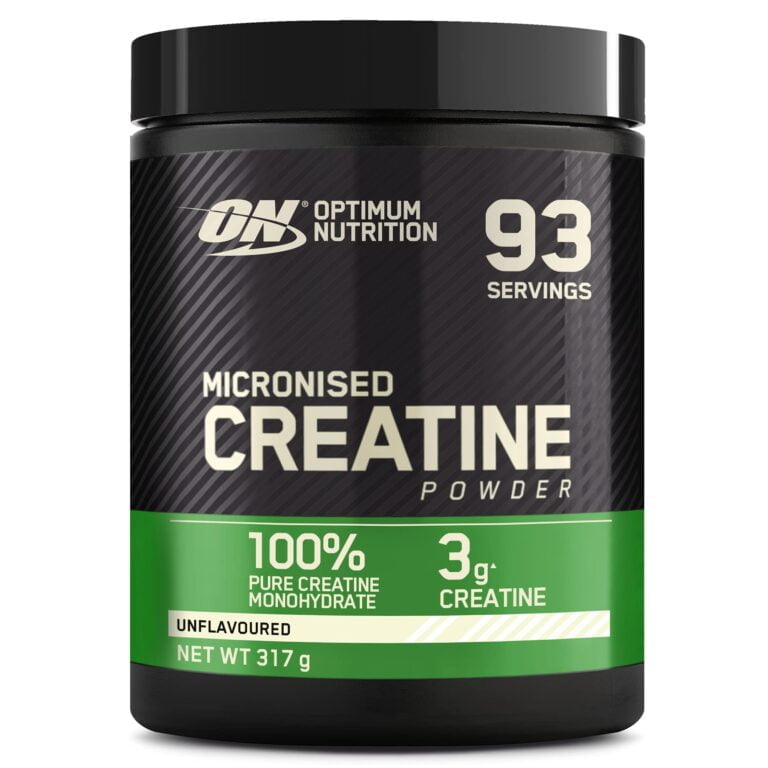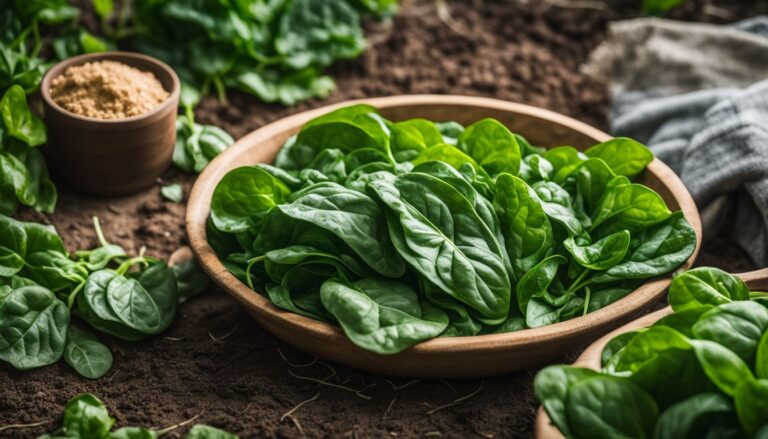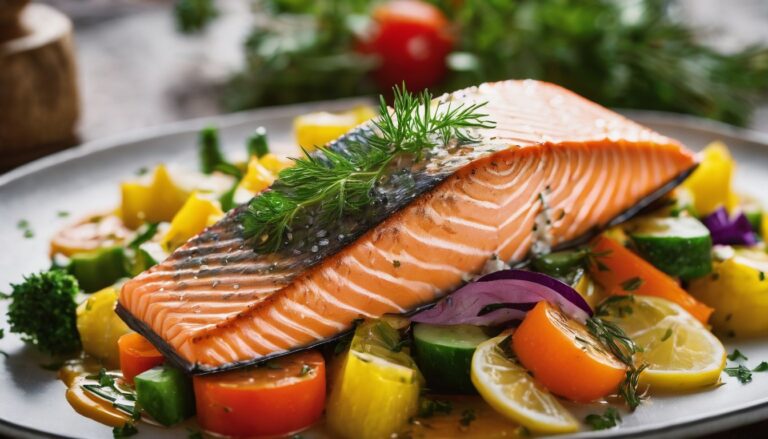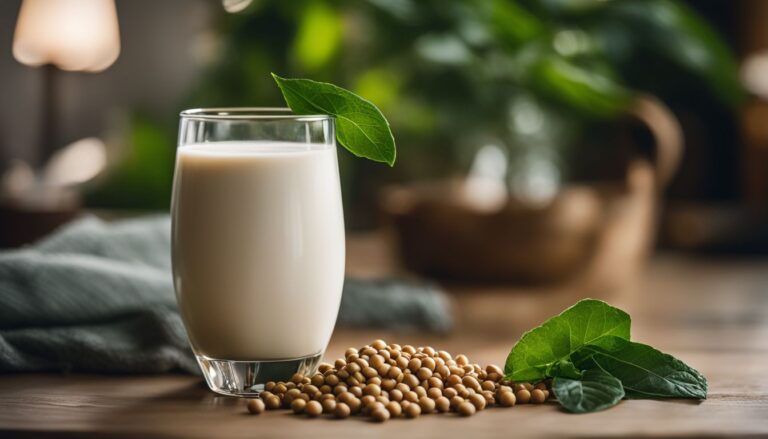Is Quinoa A Good Source Of Protein? Unveiling The Nutritional Profile And Health Benefits Of Quinoa
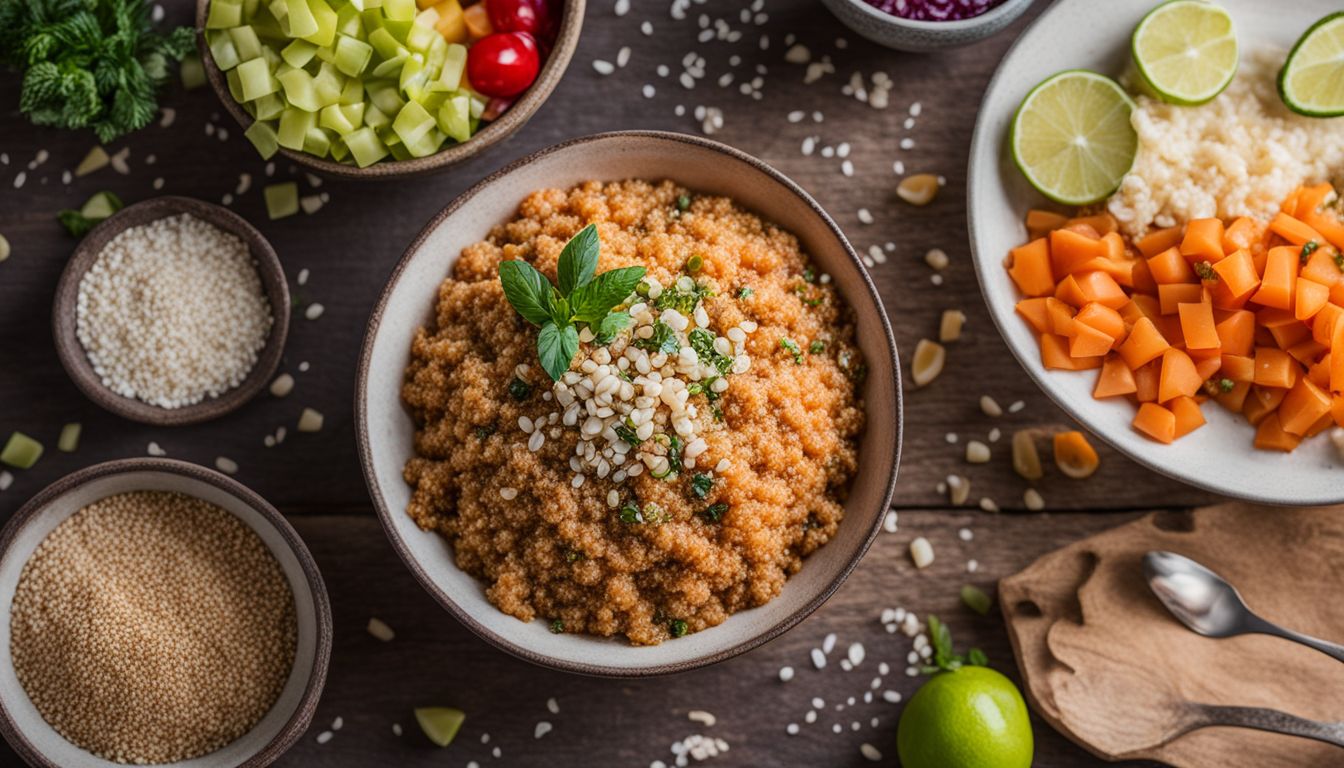
Quinoa, often hailed as a “superfood,” has garnered attention for its remarkable nutritional profile. As a dietitian with years of experience dissecting food composition, I’ve seen the rise in popularity of this ancient grain among health enthusiasts and athletes alike.
It’s no surprise when you consider quinoa’s robust protein content; this tiny seed packs a substantial nutritional punch that challenges the common notion that plant-based foods can’t compete with animal sources in terms of protein quality.
With 8 grams of high-quality protein per cup, quinoa not only stands out as an excellent source but also provides all nine essential amino acids our bodies need—an attribute rarely found in plant proteins.
This completeness makes quinoa an invaluable part of any balanced diet. Ready to dive into the world of quinoa? Discover what makes this nutty-flavored grain a stellar addition to your meals and how it can support your overall wellness journey.
Key Takeaways
- Quinoa is a complete protein source, providing all nine essential amino acids crucial for muscle growth, immune function, and overall health. Its high protein content of 8 grams per serving makes it an excellent option for vegetarians and vegans looking to maintain their protein intake without relying on animal products.
- As a versatile superfood rich in fiber and micronutrients such as magnesium, iron, and zinc, quinoa supports digestive health, stabilizes blood sugar levels, and provides essential vitamins vital for energy production and overall wellness.
- Athletes can benefit from incorporating quinoa into their diets as it offers sustained energy levels during physical activities due to its high protein and fiber content. Additionally, quinoa’s balanced amino acid profile aids in muscle repair and development while supporting improved endurance during workouts or training sessions.
- Substituting quinoa for rice or pasta in meals not only adds a boost of protein and fiber but also introduces varied textures and flavors. Incorporating this wholesome grain into salads, soups, stews or using quinoa flour in baking recipes presents an opportunity to enrich meals with added nutrition.
Quinoa Nutrition Facts and Health Benefits
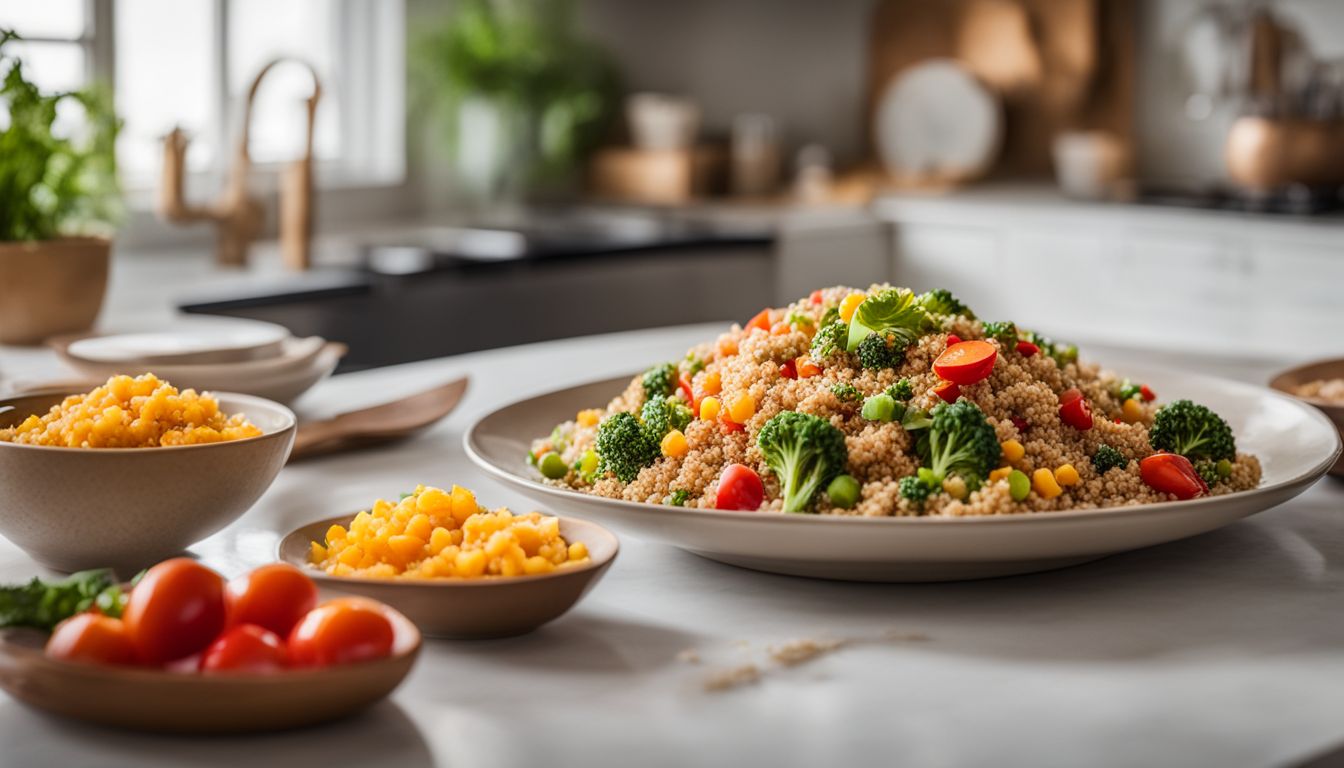
Quinoa is not only an excellent source of protein, but also a complete one, containing all nine essential amino acids that the body needs. It is also high in fiber and packed with micronutrients such as magnesium, iron, and zinc.
High in protein
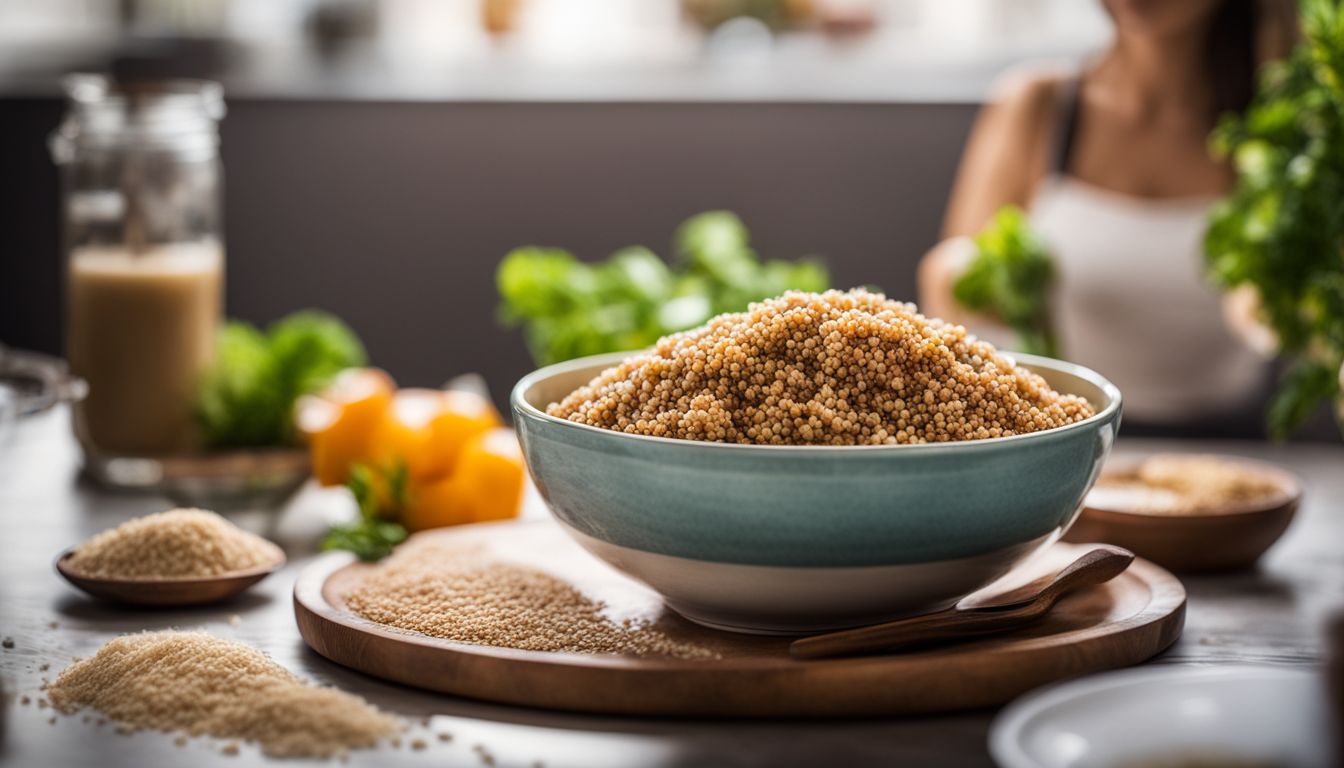
Packed with 8 grams of protein per serving, quinoa stands out as a robust source for muscle building and repair. Unlike many plant-based proteins, it provides all nine essential amino acids your body can’t produce on its own, making it a complete protein source.
This feature is especially valuable for those following vegetarian or vegan diets looking to maintain their protein intake without relying on animal products.
Its high protein content contributes to satiety, helping you feel full longer and supporting weight management efforts. As a gluten-free alternative that’s easy to digest, quinoa offers additional digestive benefits while supplying ample protein for energy and overall well-being.
The combination of these attributes showcases why quinoa is not just another grain; it’s a versatile superfood capable of boosting the nutritional profile of any meal.
Complete source of essential amino acids
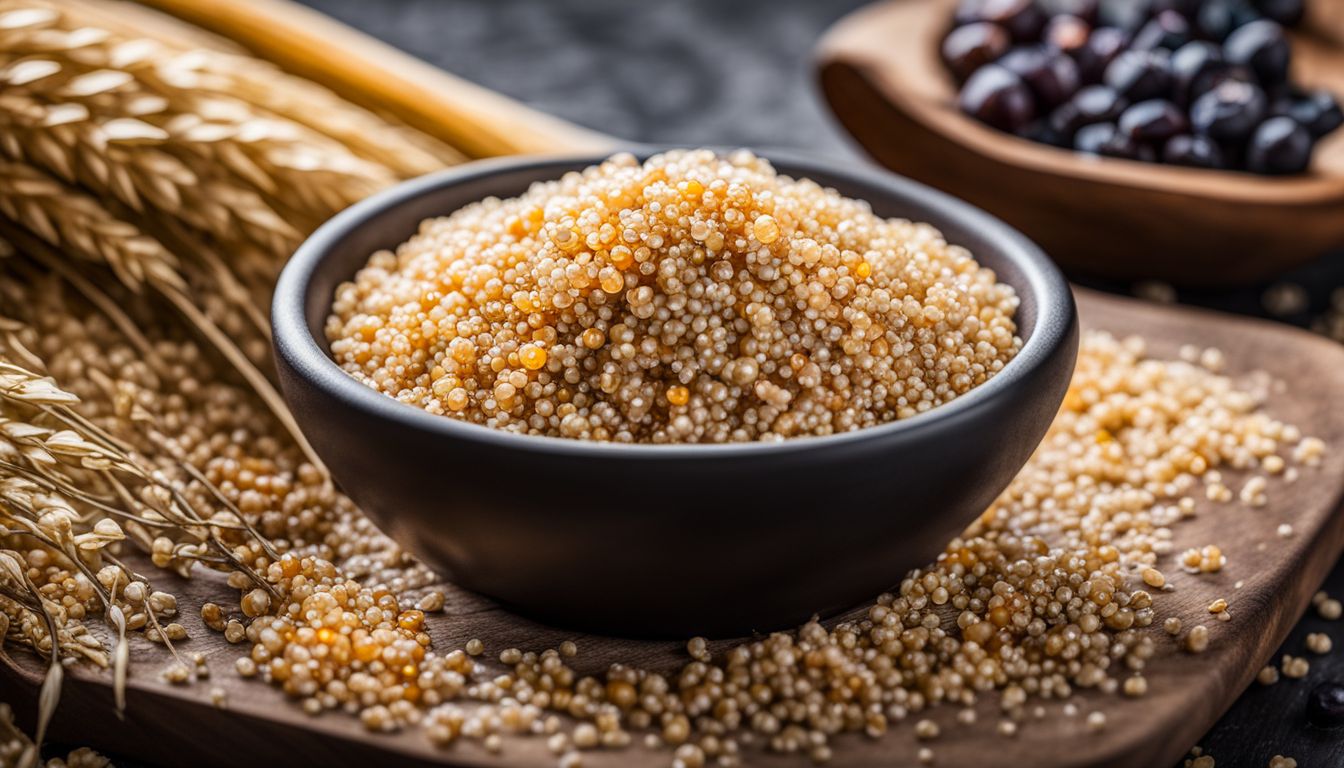
Quinoa stands out as a remarkable protein source because it contains all nine essential amino acids that our bodies cannot produce on their own. These building blocks of proteins are crucial for supporting muscle growth, immune function, and overall health.
Unlike many plant-based foods which might lack one or more of these amino acids, quinoa is often compared to animal proteins in terms of completeness.
This superfood provides an exceptional choice for vegetarians and vegans looking for a complete protein source. With its high-quality protein profile, it’s also an excellent option for those seeking to maintain or achieve a balanced diet without relying solely on meat or dairy products.
Eating quinoa helps ensure you’re getting the full spectrum of amino acids your body needs every day to function at its best.
Rich in fiber and micronutrients
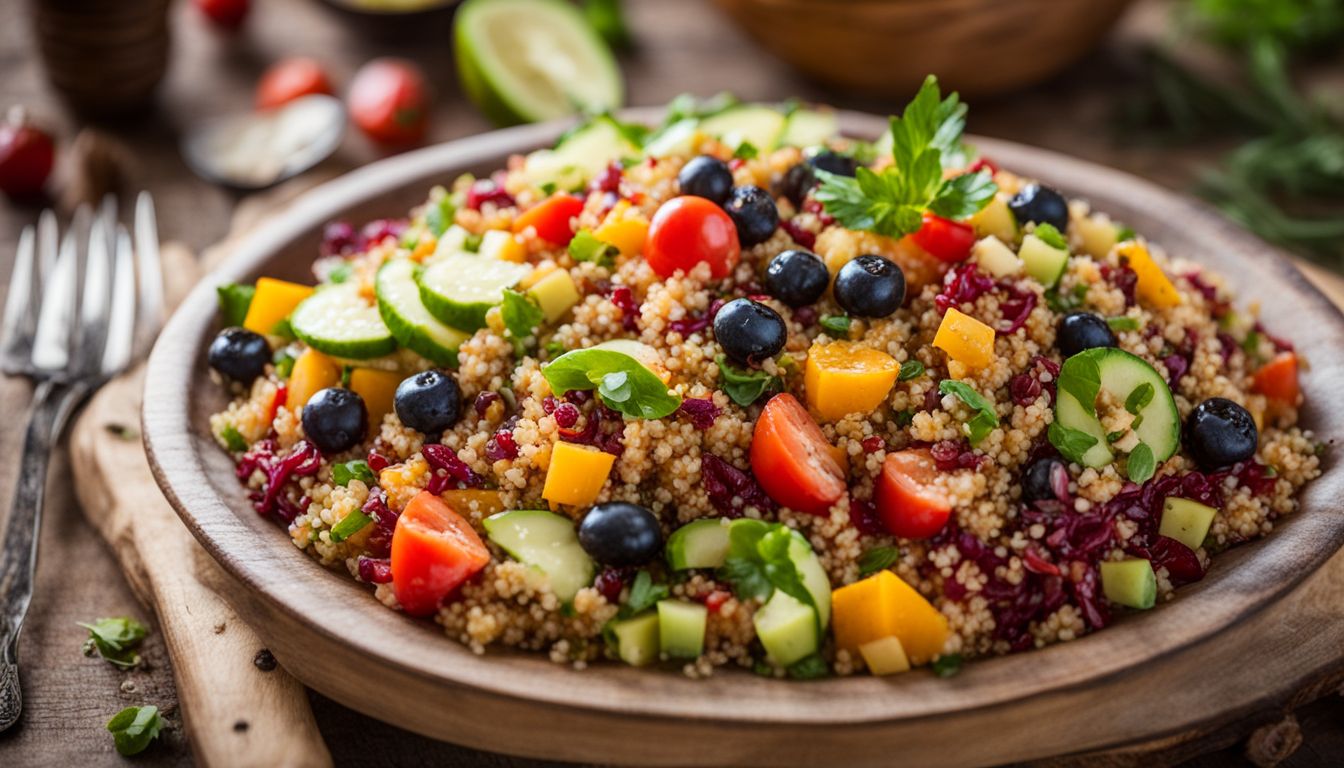
Feeding your body with enough fiber is crucial for robust digestion, and quinoa makes it simple. With a substantial 5.2 grams of dietary fiber per serving, it helps stabilize blood sugar levels and maintain a healthy digestive tract, potentially lowering the risk of intestinal cancers.
Plus, its impressive roster of micronutrients includes zinc and folate, vital for immune function and cell growth.
Packing more than just a protein punch, quinoa comes loaded with essential vitamins like thiamin (vitamin B1), which fuels our bodies by converting nutrients into energy. This power-packed whole grain is an ideal pick not only for those tracking their protein intake but also for anyone seeking to enrich their diet with necessary fibers and minerals that support overall health.
Quinoa for Sports Training
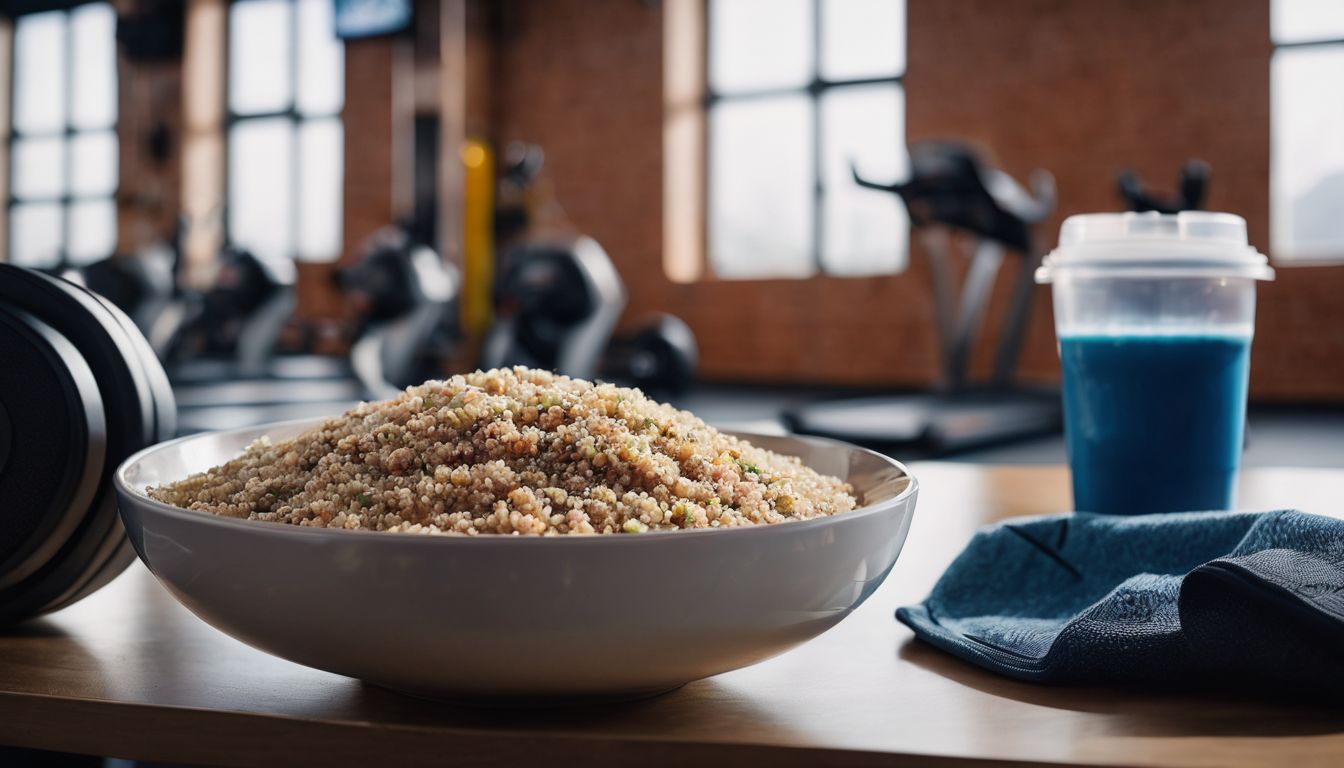
Quinoa is a great option for athletes as it provides sustained energy, helps build and repair muscle, and may improve physical performance.
Provides sustained energy

Quinoa provides sustained energy, making it an ideal choice for athletes and active individuals. With its high protein and fiber content, quinoa helps maintain steady blood sugar levels, providing continuous fuel for physical activities.
Its complex carbohydrates release energy gradually, supporting endurance during workouts or training sessions.
Consuming quinoa before exercise can help sustain energy levels throughout the activity. Additionally, the combination of protein and fiber in quinoa contributes to a feeling of fullness, which can prevent energy crashes often associated with consuming simple carbohydrates alone.
May improve physical performance
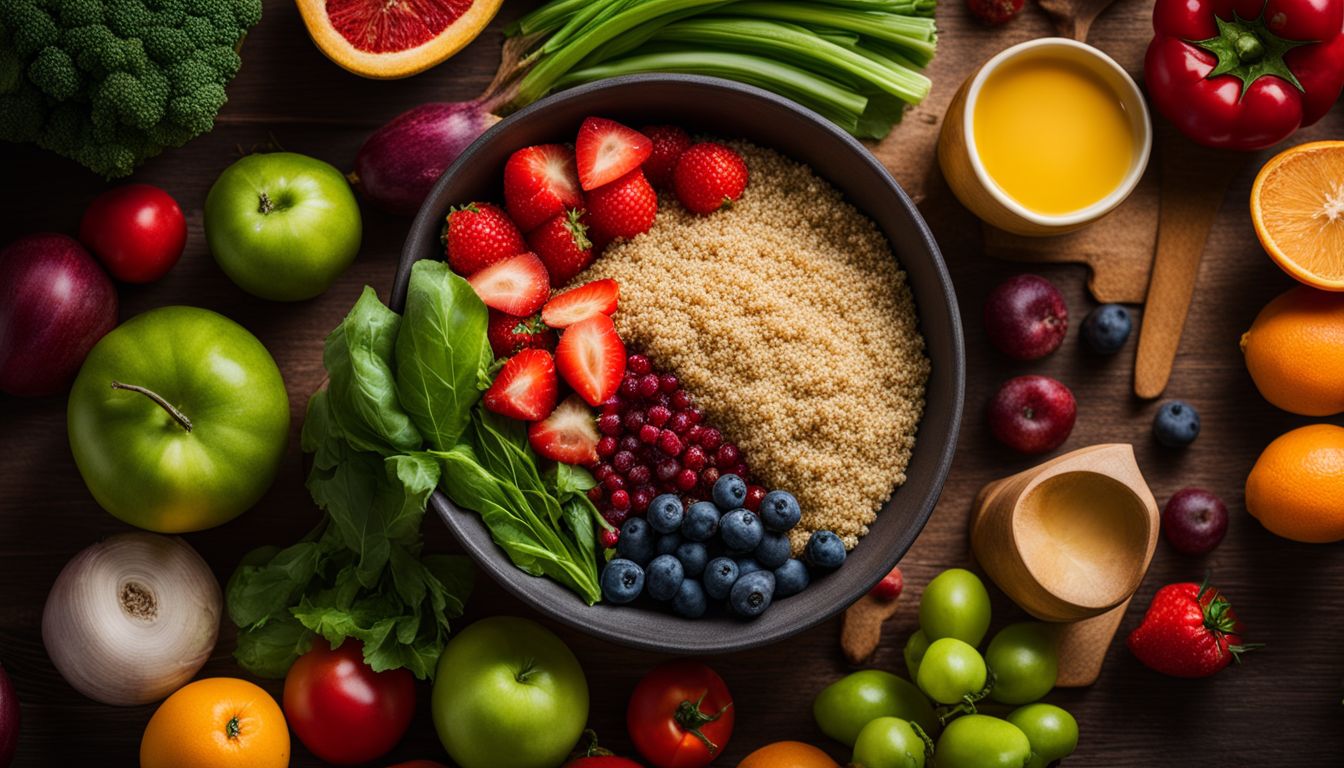
Quinoa, with its high protein content and balanced amino acid profile, can aid in muscle repair and development. Its steady release of energy can support endurance during physical activity.
Additionally, the fiber content of quinoa may help regulate blood sugar levels, providing a sustained source of energy for improved physical performance. The combination of nutrients found in quinoa provides essential support for overall physical well-being.
Quinoa’s nutrient composition supports enhanced endurance and muscle recovery during physical activities. It offers an invaluable blend of protein, fiber, and essential nutrients that contribute to improved athletic performance.
How Quinoa Compares to Other Carbohydrate Sources

Quinoa contains more protein than rice, has a lower glycemic index than white bread, and is higher in fiber and micronutrients than pasta. Curious to learn more about the nutritional benefits of quinoa? Keep reading to find out!
Higher protein content than rice
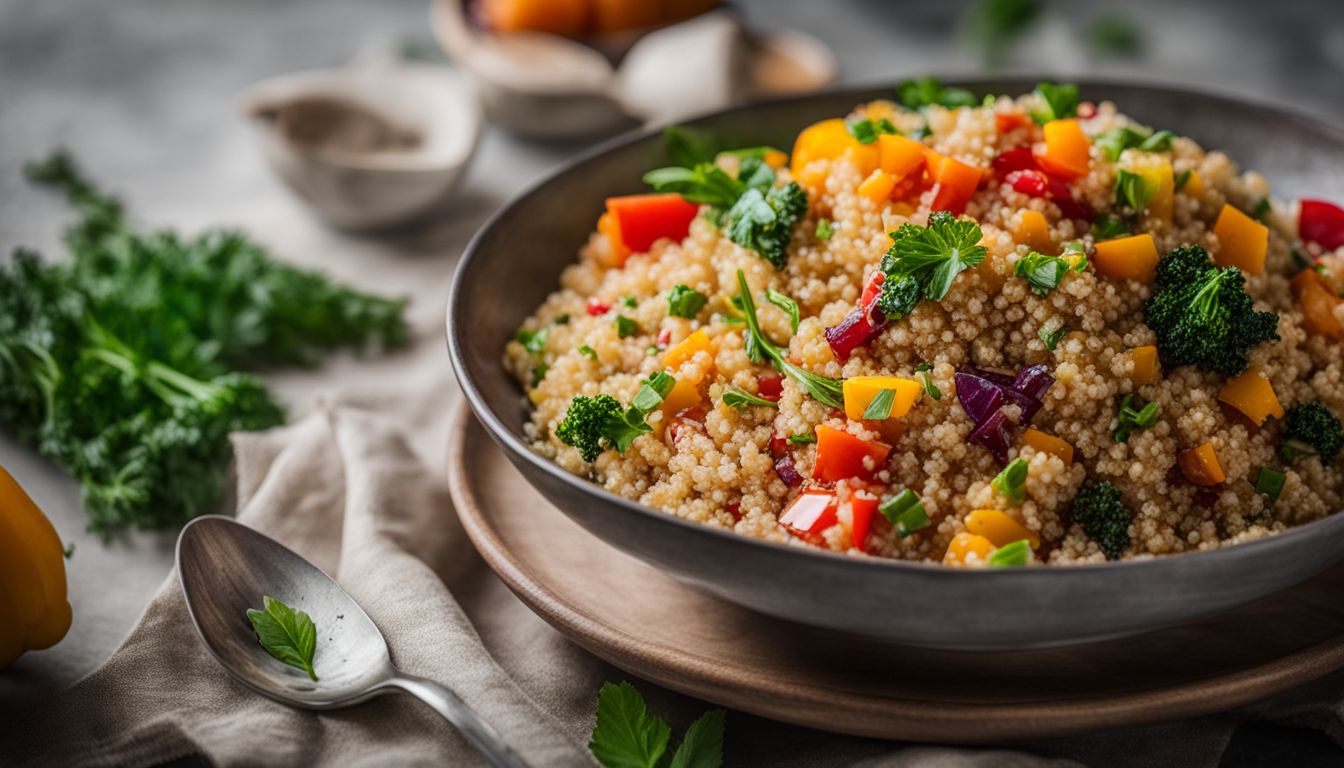
Quinoa boasts a higher protein content than rice, making it an excellent plant-based source of this essential macronutrient. With approximately 8 grams of protein per cooked cup, quinoa provides more protein than an equivalent serving of white or brown rice.
This makes it a favorable option for individuals seeking to increase their protein intake without consuming animal products, as well as for those looking to diversify their carbohydrate sources with a more nutrient-dense alternative.
Incorporating quinoa into meals in place of rice can help boost overall protein consumption and contribute to meeting daily nutritional needs. Additionally, its higher protein content offers a significant advantage for individuals following vegetarian or vegan diets and striving to maintain adequate protein intake through plant-based sources.
Lower glycemic index than white bread
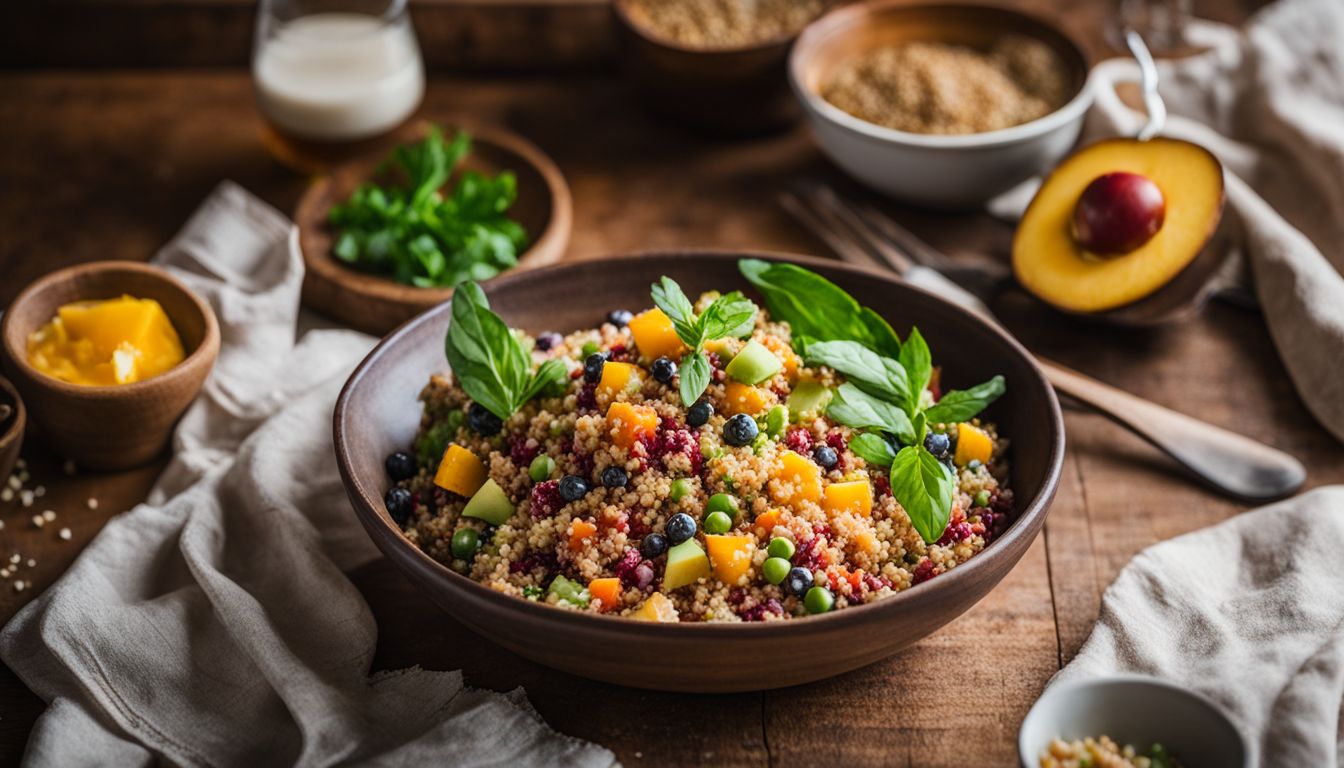
Quinoa has a lower glycemic index compared to white bread, making it a better choice for managing blood sugar levels. This means that quinoa causes a slower and steadier rise in blood sugar after consumption, providing sustained energy without the rapid spike and crash associated with high-glycemic foods.
As a result, incorporating quinoa into your diet can help regulate your body’s glucose levels more effectively.
Due to its lower glycemic index than white bread, quinoa is an ideal option for those looking to maintain steady energy levels throughout the day and manage their blood sugar.
Higher in fiber and micronutrients than pasta
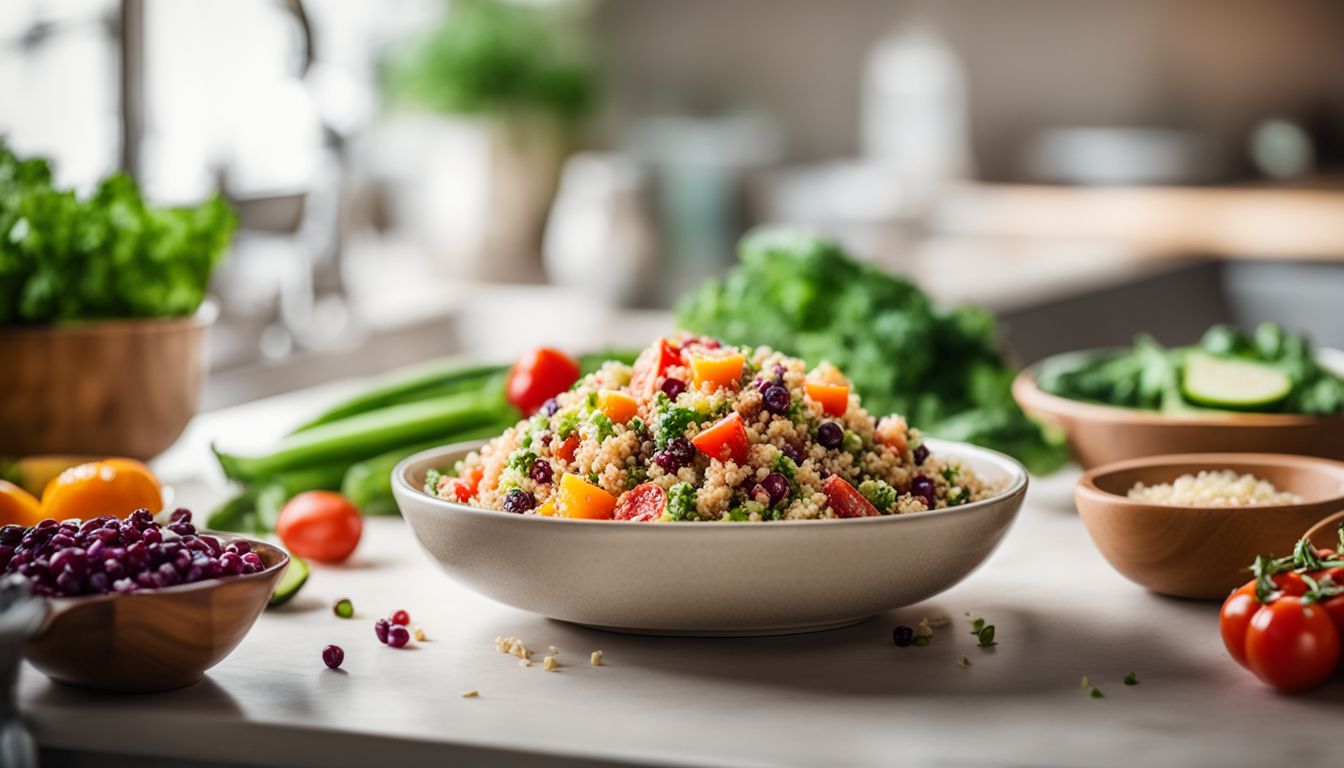
Quinoa offers a higher fiber content and more micronutrients than pasta, making it a wholesome alternative for those seeking balanced nutrition. With approximately twice the amount of fiber per serving compared to pasta, quinoa can support digestive health and contribute to a feeling of fullness.
Additionally, its rich array of micronutrients such as zinc, magnesium, and B vitamins provide essential support for overall well-being.
Incorporating quinoa into your diet provides an opportunity to enhance your nutritional intake while enjoying a versatile ingredient that can be used in various dishes.
Tips for Incorporating Quinoa into Your Diet

– Substituting quinoa for rice or pasta in meals can add a boost of protein and fiber to your diet.
Use as a replacement for rice or pasta
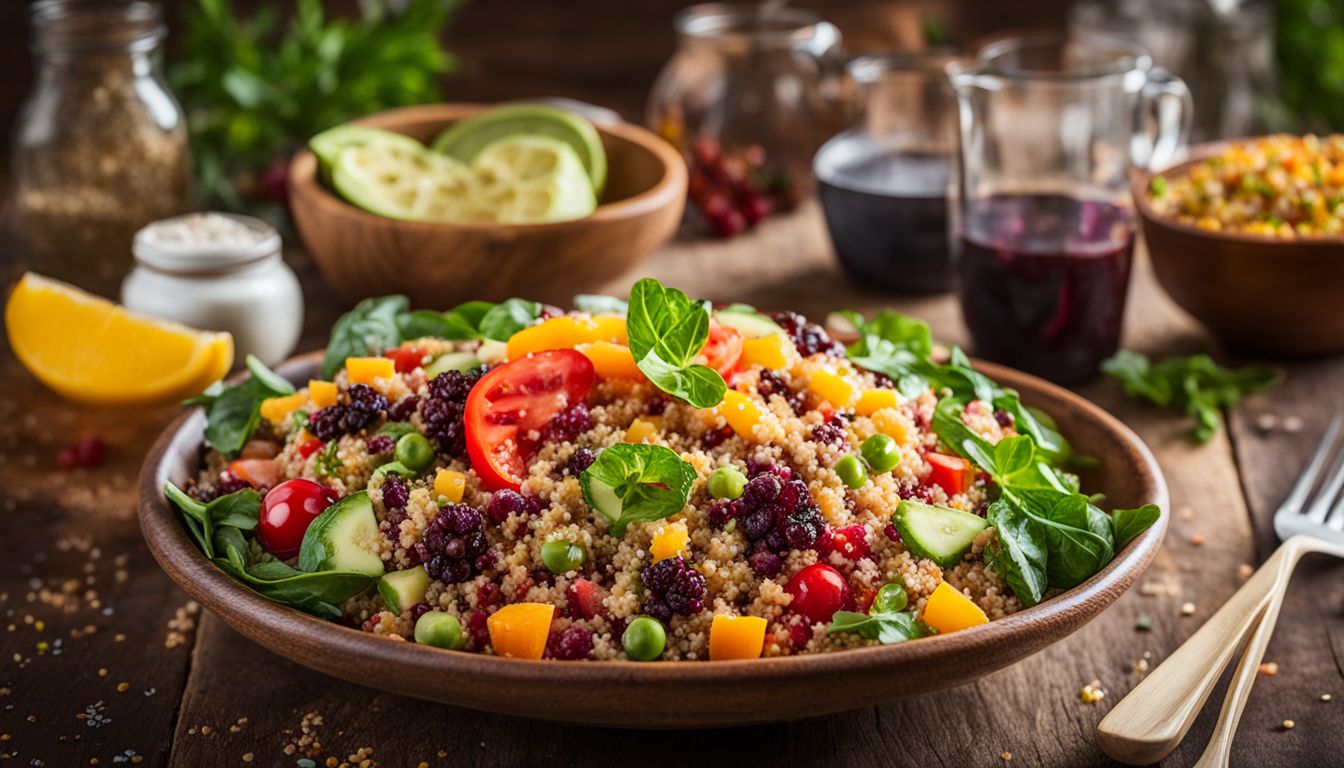
Substitute quinoa for rice or pasta to enhance the nutritional value of your meals. Quinoa is a high-protein, high-fiber alternative that can provide sustained energy and essential nutrients, making it a great choice for those looking to improve their overall diet.
With its versatility and ability to absorb flavors well, incorporating quinoa into your favorite recipes is an easy way to boost the protein content of your meals while adding a delicious nutty flavor.
Quinoa’s higher protein content compared to rice and pasta makes it an excellent replacement in various dishes. Moreover, its lower glycemic index supports steadier blood sugar levels, offering added health benefits beyond what traditional carbohydrates provide.
Add to salads, soups, or stews for added nutrition
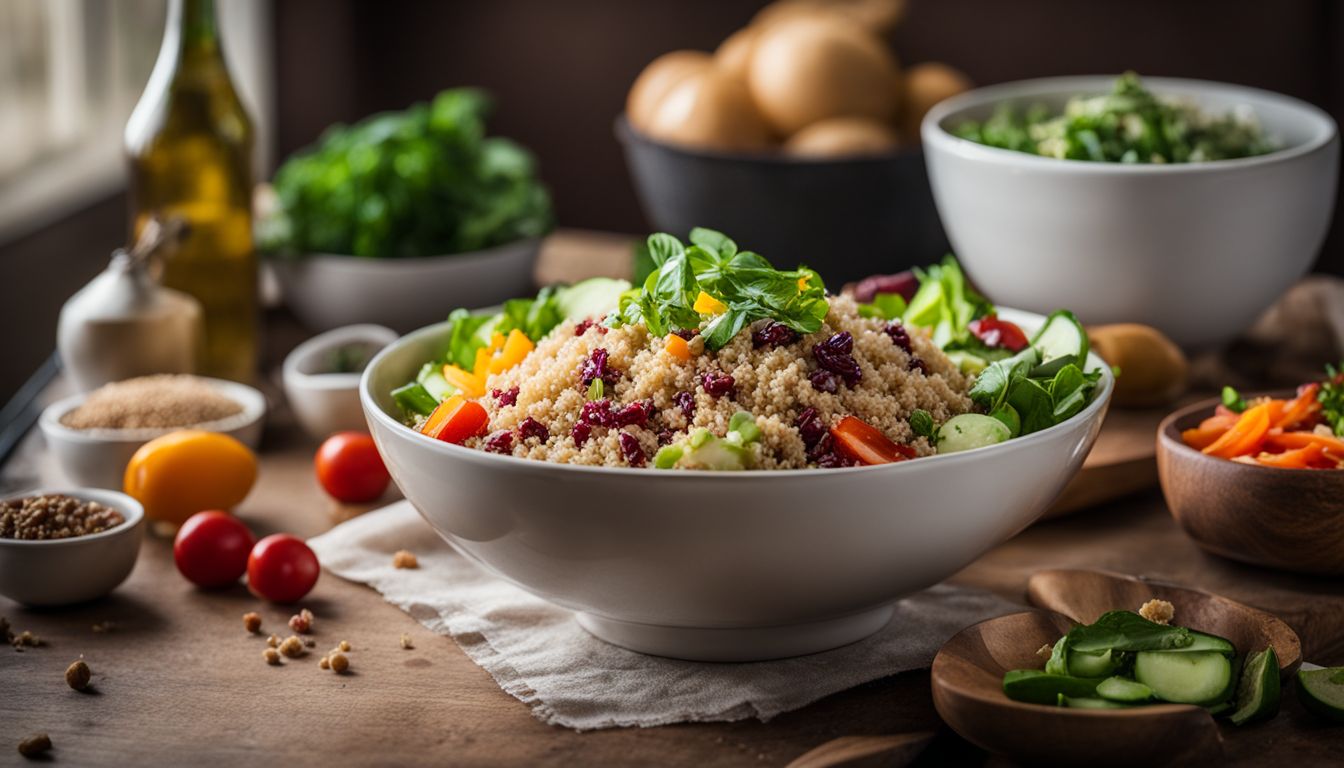
Enhance the nutritional value of your meals by incorporating quinoa into salads, soups, or stews. Quinoa’s high protein content and impressive array of vitamins and minerals make it a valuable addition to boost the nutrient density of these dishes.
Whether you sprinkle cooked quinoa onto a mixed green salad or stir it into a warm vegetable soup, you’ll be adding an extra dose of protein, fiber, and essential nutrients to your diet.
Moreover, this versatile grain’s ability to absorb flavors makes it an ideal ingredient for enhancing the depth and richness of your favorite recipes.
Substitute quinoa flour for wheat flour

Replace wheat flour with quinoa flour in your recipes to enhance their nutritional value. Quinoa flour is a complete protein source, rich in fiber, and gluten-free, making it an excellent alternative to wheat flour for those with gluten sensitivities or seeking a higher protein content.
By swapping out wheat flour with quinoa flour, you can boost the protein and fiber content of your baked goods while also benefiting from its array of essential nutrients.
Quinoa flour’s high protein and mineral content make it an ideal choice for individuals looking to add more nutrients into their diet without sacrificing taste. Use this versatile ingredient in baking recipes such as bread, muffins, pancakes, or cookies for a healthy twist on traditional favorites.
Conclusion: Quinoa as a Versatile and Nutritious Source of Protein
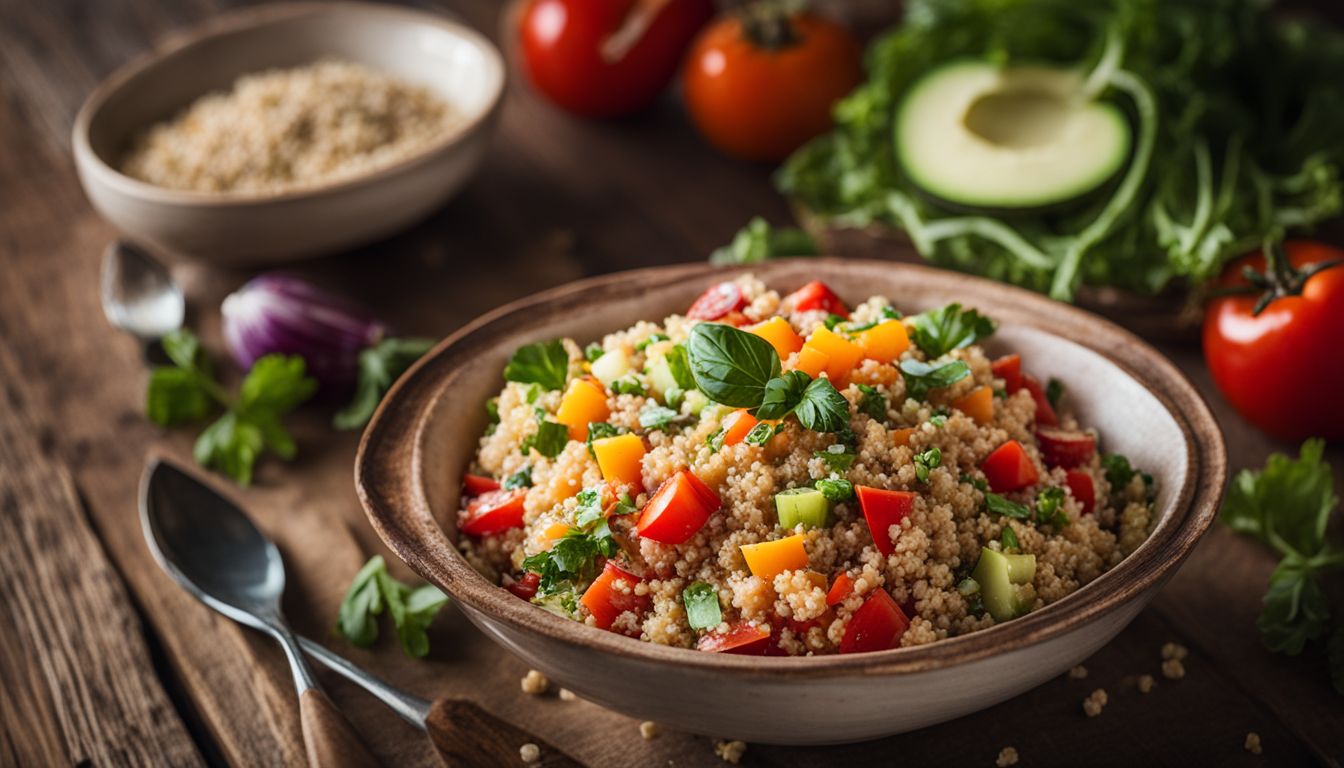
Quinoa emerges as a versatile and nutritious source of protein, rich in essential amino acids, fiber, and micronutrients. Incorporating quinoa into your diet offers practical benefits – be it replacing rice or pasta or adding it to salads for enhanced nutrition.
By embracing the goodness of quinoa, you embark on a journey towards improved health and wellness. Its impact transcends mere sustenance – it holds the potential to elevate your overall well-being and vitality.
FAQs
1. Is quinoa a good source of protein?
Yes, quinoa is an excellent source of protein and contains all the essential amino acids, making it a complete protein source which is great for your diet.
2. Can I use quinoa as an alternative to other proteins?
Definitely! Quinoa can be a fantastic alternative protein source for those looking to diversify their protein intake or follow a plant-based diet.
3. Does quinoa have enough protein compared to other sources?
Quinoa is not only a good source of protein but also compares well with other traditional sources, providing you with high-quality complete proteins that are beneficial for health.
4. Why do people consider quinoa as a preferred choice of protein in diets?
People prefer using quinoa as a source of protein because it’s versatile, has all nine essential amino acids, and adds variety to meals while offering numerous health benefits.
5. What makes quinoa different from other grains in terms of protein content?
Unlike many grains, quinoa is considered unique because it serves as both a carb and an outstanding source de proteína (source of protein), perfect for anyone needing more nutrients.
Sources referenced in this article
- https://www.healthline.com/nutrition/8-health-benefits-quinoa
- https://www.webmd.com/diet/health-benefits-quinoa
- https://health.clevelandclinic.org/the-health-benefits-of-quinoa/
- https://www.eatingwell.com/article/8068328/is-quinoa-good-for-you/
- https://www.netmeds.com/health-library/post/quinoa-nutrition-health-benefits-uses-for-skin-hair-recipes
- https://www.ncbi.nlm.nih.gov/pmc/articles/PMC10376479/
- https://www.livestrong.com/article/13723754-quinoa-nutrition-facts/

Author
Years ago, the spark of my life’s passion ignited in my mind the moment I stepped into the local gym for the first time. The inaugural bead of perspiration, the initial endeavor, the very first surge of endorphins, and a sense of pride that washed over me post-workout marked the beginning of my deep-seated interest in strength sports, fitness, and sports nutrition. This very curiosity blossomed rapidly into a profound fascination, propelling me to earn a Master’s degree in Physical Education from the Academy of Physical Education in Krakow, followed by a Sports Manager diploma from the Jagiellonian University. My journey of growth led me to gain more specialized qualifications, such as being a certified personal trainer with a focus on sports dietetics, a lifeguard, and an instructor for wellness and corrective gymnastics. Theoretical knowledge paired seamlessly with practical experience, reinforcing my belief that the transformation of individuals under my guidance was also a reflection of my personal growth. This belief holds true even today. Each day, I strive to push the boundaries and explore new realms. These realms gently elevate me to greater heights. The unique combination of passion for my field and the continuous quest for growth fuels my drive to break new ground.






